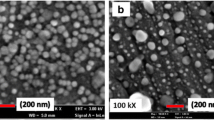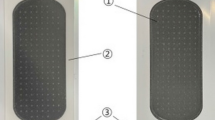Abstract
Hydrocortisone cream intended for atopic eczema often produces unwanted side effects after long-term use. These side effects are essentially due to repeated percutaneous administration of the medication for skin dermatitis, as atopic eczema is a relapsing disorder. Hence, there is a need to develop a new hydrocortisone formulation that will deliver the drug more effectively and require a reduced dosing frequency; therefore, the side effects could be minimized. In this study, a hydroxypropyl methylcellulose (HPMC) lyogel system based on 80% organic and 20% aqueous solvents containing 1% hydrocortisone was formulated. The hydrocortisone lyogel physicochemical characteristics, rheological properties, stability profile, and in vitro Franz cell drug release properties, as well as the in vivo therapeutic efficacies and dermal irritancy in Balb/c mice were investigated. The HPMC lyogel appeared clear and soft and was easy to rub on the skin. The lyogel also showed a higher drug release profile compared with commercial hydrocortisone cream. Similar to the cream, HPMC lyogels exhibited pseudoplastic behavior. From the mouse model, the hydrocortisone lyogel showed higher inflammatory suppressive effects than the cream. However, it did not reduce the transepidermal water loss as effectively as the control did. The dermal irritancy testing revealed that the hydrocortisone lyogel caused minimal irritation. In conclusion, HPMC lyogel is a promising vehicle to deliver hydrocortisone topically, as it showed a higher drug release in vitro as well as enhanced therapeutic efficacy in resolving eczematous inflammatory reaction compared with commercial cream.







Similar content being viewed by others
References
Eczema, Atopic Eczema and Atopic Dermatitis. World Allergy Organisation. 2013. http://www.worldallergy.org/professional/allergic_diseases_center/atopiceczema/. Accessed 13 March 2013.
Hoare C, Li Wan Po A, Williams H. Systematic review of treatments for atopic eczema. Health Technol Assess. 2000;4(37):1–191
Silverberg JI, Hanifin JM. Adult eczema prevalence and associations with asthma and other health and demographic factors: a US population-based study. J Allergy Clin Immunol. 2013;132:1132–8.
Barnetson R, Wright A, Benton E. IgE-mediated allergy in adults with severe atopic eczema. Clin Exp Allergy. 1989;19(3):321–5.
Raimer SS. Managing pediatric atopic dermatitis. Clin Pediatr. 2000;39:1–14.
Charman C, Morris A, Williams H. Topical corticosteroid phobia in patients with atopic eczema. Br J Dermatol. 2002;142(5):931–6.
Billich A, Aschauer H, Aszodi A, Stuetz A. Percutaneous absorption of drugs used in atopic eczema: pimecrolimus permeate less through skin than corticosteroids and tacrolimus. Int J Pharm. 2004;269:29–35.
Peppas NA, Bures P, Leobandung W, Ichikawa H. Hydrogels in pharmaceutical formulations. Eur J Pharm Biopharm. 2000;50:27–46.
Kim SW, Bae YH, Okano T. Hydrogels: swelling, drug loading, and release. Pharm Res. 1992;9(3):283–90.
Hoare TR, Kohane DS. Hydrogels in drug delivery: progress and challenges. Polymer. 2008;49(8):1993–2007.
Bendas B, Schmalfuβ U, Neubert R. Influence of propylene glycol as cosolvent on mechanisms of drug transport from hydrogels. Int J Pharm. 1995;116(1):19–30.
Clarys P, Alewaeters K, Jadoul A, Barel A, Manadas R, Preat V. In vitro percutaneous penetration through hairless rat skin: influence of temperature, vehicle and penetration enhancers. Eur J Pharm Biopharm. 1998;46(3):279–83.
Uttley M, Abbe NJV. Primary irritation of the skin: mouse ear test and human patch test procedures. J Soc Cosmet Chem. 1973;24:217–27.
Ofner III C, Klech-Gelotte C. Gel and jellies. In: Swarbrick J, editor. Encyclopedia of pharmaceutical technology. 3rd ed. New York: Informa; 2007. p. 1875–90.
Marriot C. Rheology. In: Aulton ME, Taylor MGT, editors. Aulton’s pharmaceutics the design and manufacture of medicines. 4th ed. Edinburgh: Churchill Livingstone Elsevier; 2013. p. 94–114.
Mundlein M, Valentin B, Chabicovsky R, Nicolics J, Weremczuk J, Tarapata G, et al. Comparison of transepidermal water loss (TEWL) measurements with two novel sensors based on different sensing principles. Sensor Actuat A Phys. 2001;142(1):67–72.
Stevens A, Lowe JS. Skin and breast. In: Stevens A, Lowe JS, editors. Human histology. 3rd ed. Michigan: Elsevier Mosby; 2004. p. 373–94.
Andersen F. Final report of the safety assessment of propylene glycol and polypropylene glycols. J Am Coll Toxicol. 1994;13(6):473–91.
Studies regarding the safety of propylene glycol use in cosmetic products. American Chemistry Council. 2001. http://msdssearch.dow.com/PublishedLiteratureDOWCOM/dh_0046/0901b80380046c71.pdf?filepath=propyleneglycol/pdfs/noreg/117-01662.pdf&fromPage=GetDoc. Accessed 19 March 2013.
OECD. Skin sensitization. OECD guidelines for the testing of chemicals section 4: health effects. 2010. p. 1–20.
Acknowledgement
The authors would like to thank the Universiti Kebangsaan Malaysia (UKM) for the research funds (GUP-2013-090) and the Faculty of Pharmacy, UKM for the research facility support.
Author information
Authors and Affiliations
Corresponding author
Rights and permissions
About this article
Cite this article
Ng, SF., Anuwi, NA. & Tengku-Ahmad, TN. Topical Lyogel Containing Corticosteroid Decreases IgE Expression and Enhances the Therapeutic Efficacy Against Atopic Eczema. AAPS PharmSciTech 16, 656–663 (2015). https://doi.org/10.1208/s12249-014-0248-y
Received:
Accepted:
Published:
Issue Date:
DOI: https://doi.org/10.1208/s12249-014-0248-y




